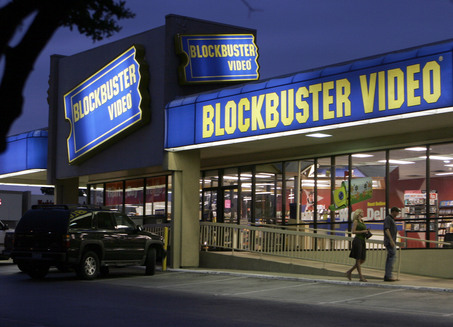
Generating three times as much revenue as the theatre arena, the home video market was extremely lucrative and, as a result, highly competitive. Number-one ranked Blockbuster Inc. (previously Blockbuster Entertainment Corp.), which was three times the size of Hollywood Video, had dominated the field for a decade and at the end of 1997 boasted 4,000 stores in the United States and 6,000 globally. Purchased by entertainment giant Viacom Inc. in 1994, Blockbuster enjoyed a commanding market share of 25 percent at the beginning of 1998. Hollywood, though expanding rapidly, had just fewer than 1,000 stores by Christmas 1997 and a market share of about 5 percent, according to the Portland Oregonian. Blockbuster was not invincible, however, and the company struggled in 1996 and 1997 as a result of financial and marketing blunders. Hollywood Video, meanwhile, enjoyed rapid expansion and healthy profits. Though media reports made much of the competition between Blockbuster and Hollywood, Wattles maintained that he did not view Blockbuster as a rival or an enemy. ‘‘[W]hile Blockbuster is certainly the Goliath, I would not describe us as the David at all. We are not out to slay Goliath,’’ Wattles said in the Wall Street Transcript in 1994. He referred to Blockbuster as ‘‘our friendly competitor’’ and insisted there was room in the market for both superstore chains. Still, the two appeared to be rivals—Hollywood claimed to have the largest number of titles, offered guaranteed availability of popular releases, and had aggressive pricing and rental strategies. Blockbuster, with a new CEO and renewed focus on video rentals, responded in late 1997 by lowering its prices, extending rental periods, providing incentives for returning rentals early, and offering more new releases. Blockbuster also launched a new advertising campaign in early 1998 with the theme, ‘‘Get your movie . . . and go home happy.’’
Blockbuster and Hollywood Video were the clear leaders in the video-rental market, but both companies had to contend with independent retailers as well as national and regional chains such as third-ranked Video Update Inc. and Suncoast Motion Picture Company. The independents, on the other hand, complained that they could not compete with video giants, which were capable of instituting revenue-sharing deals with movie studios that allowed them to purchase videos at much lower costs and thus offer larger numbers of popular titles—the Independent Video Retailers Group stated that independent stores located within three miles of a Blockbuster store suffered from an 11 percent decline in revenues during the first half of 1998.

